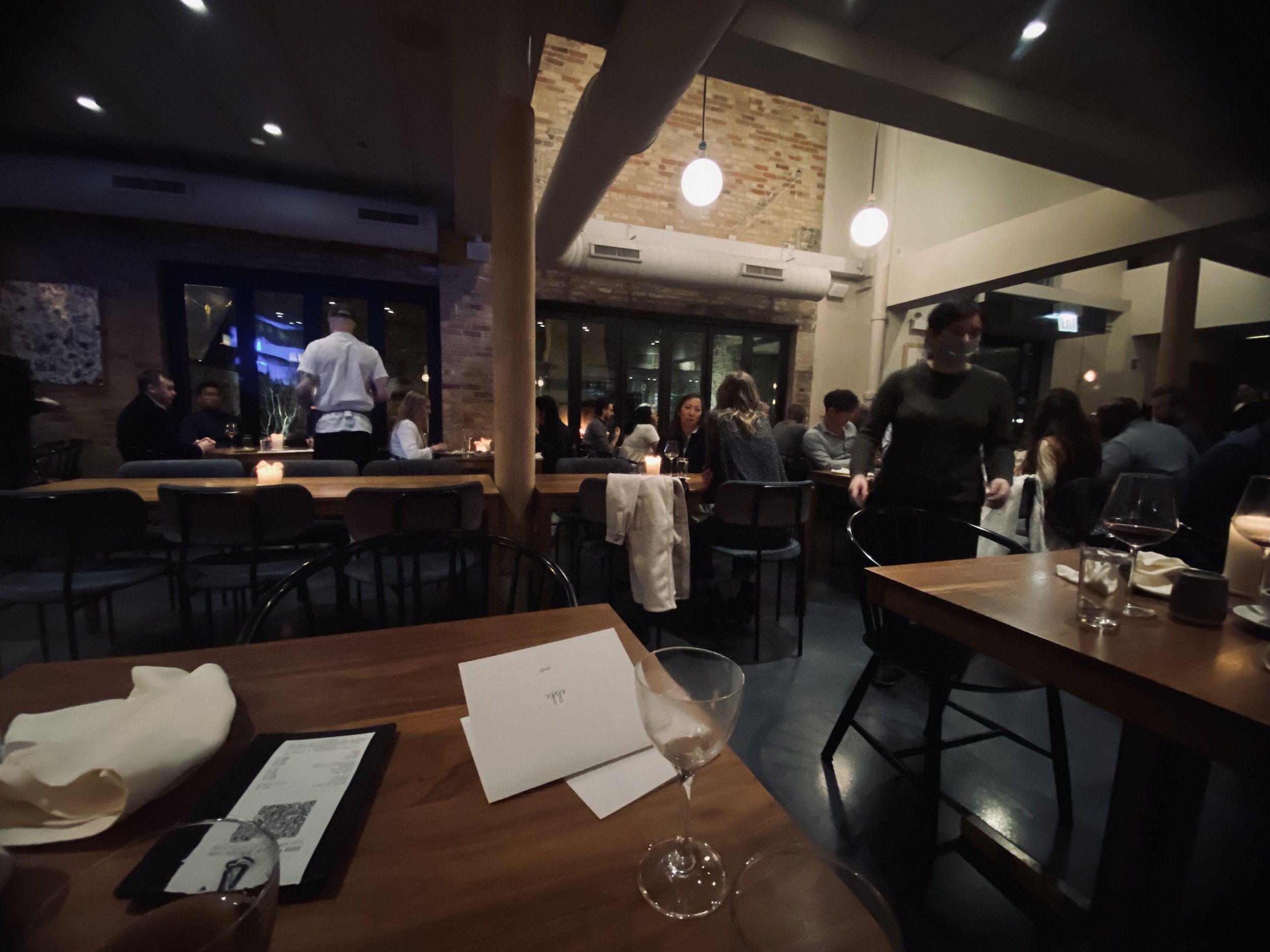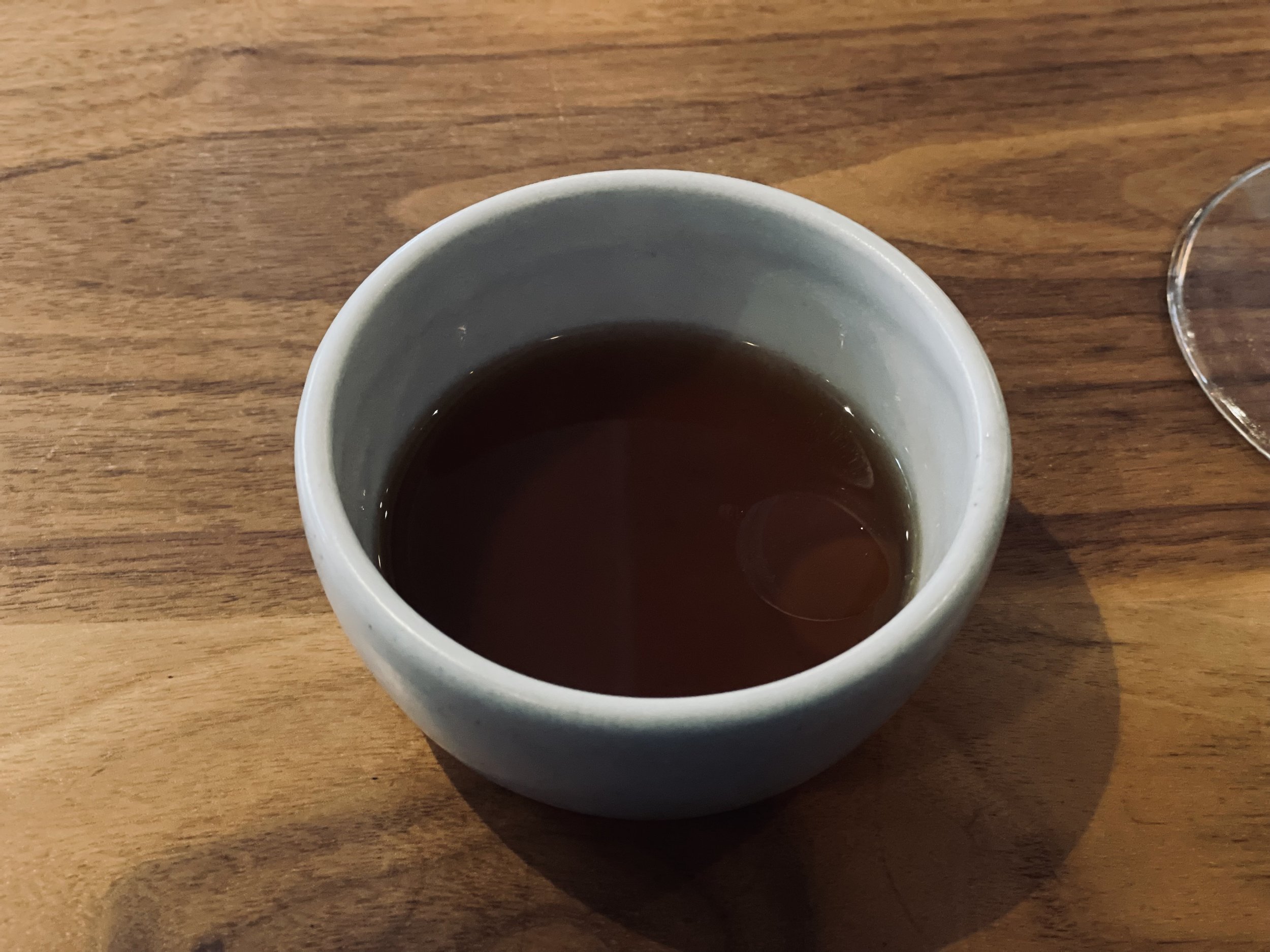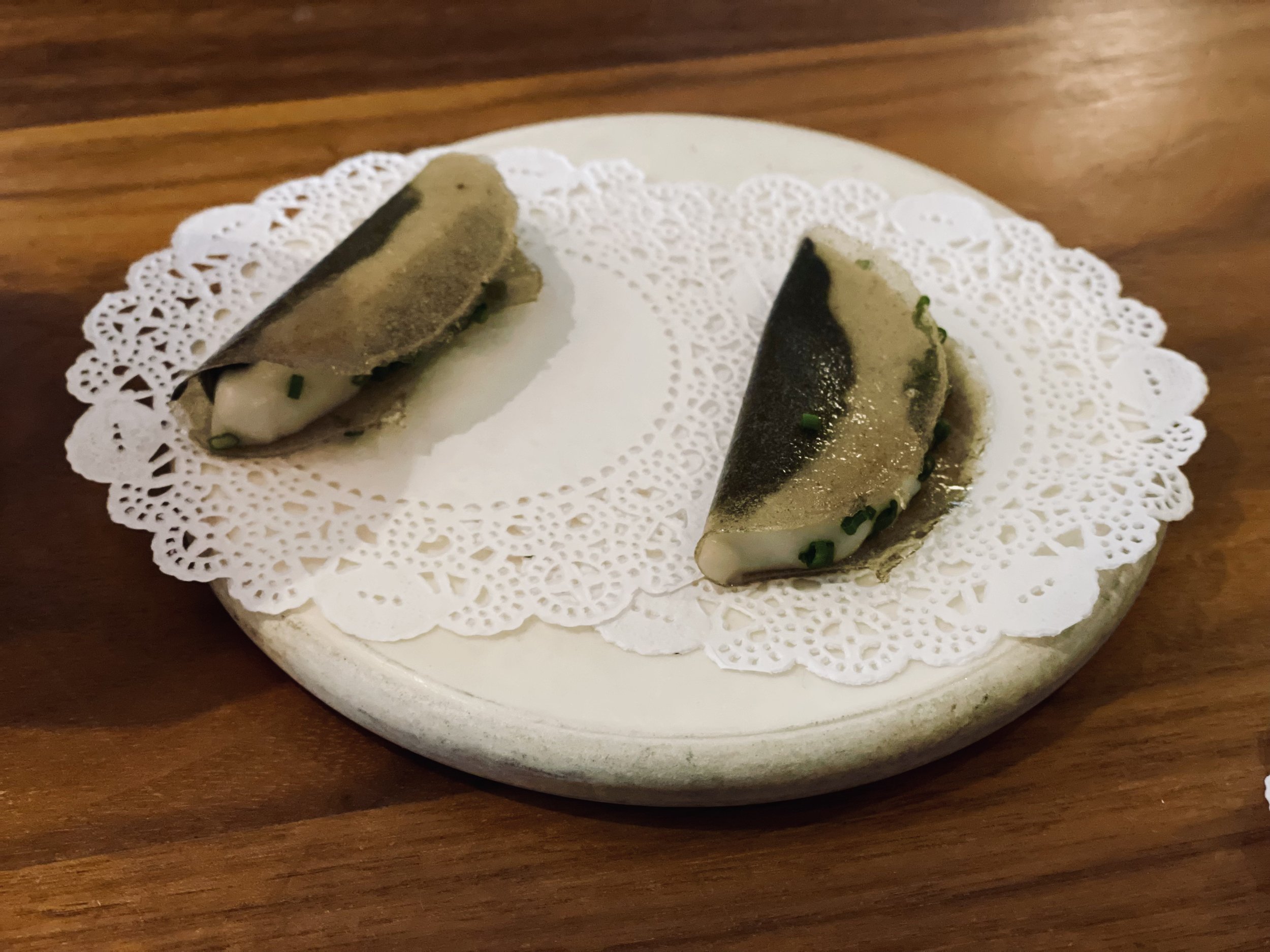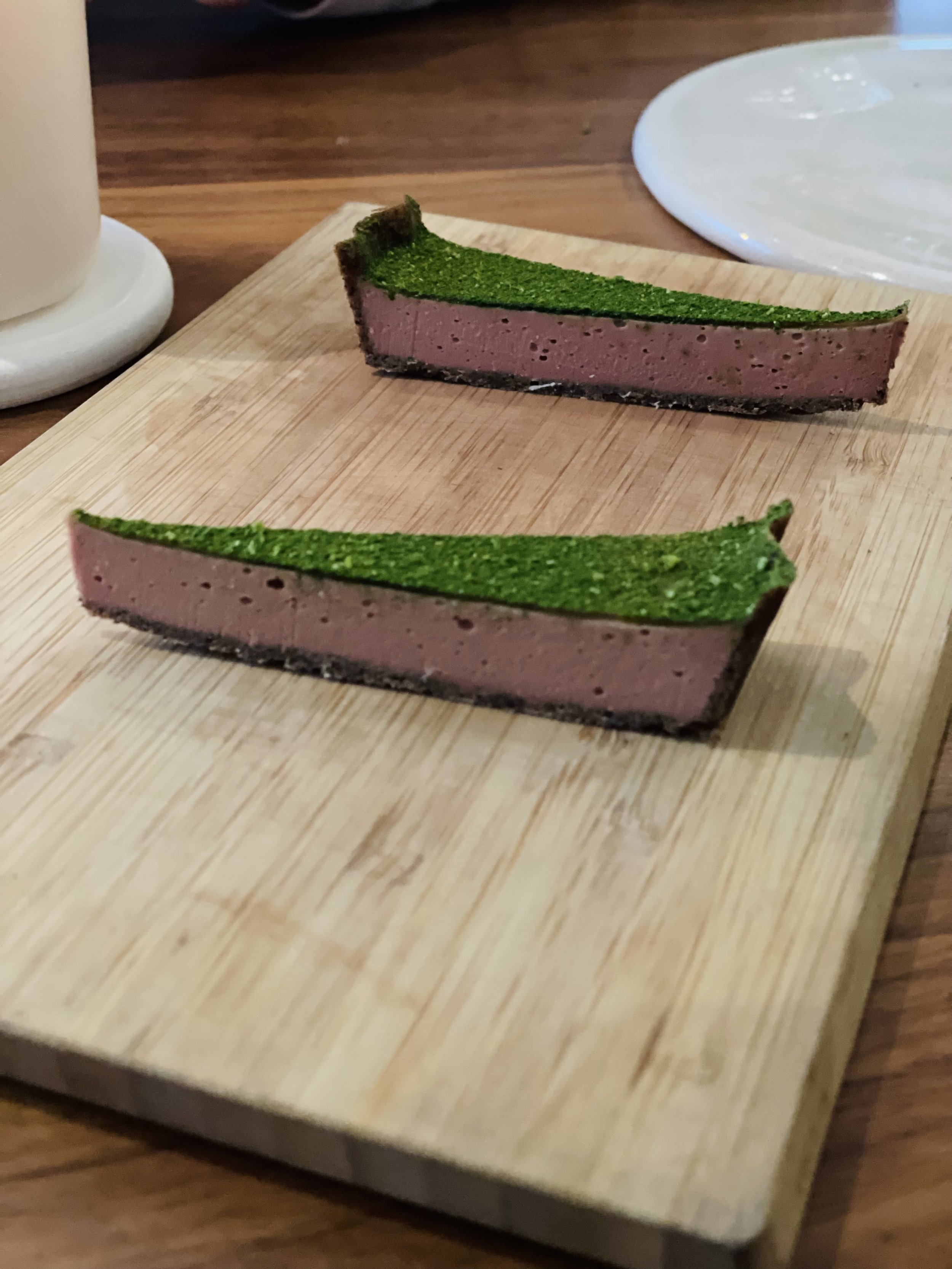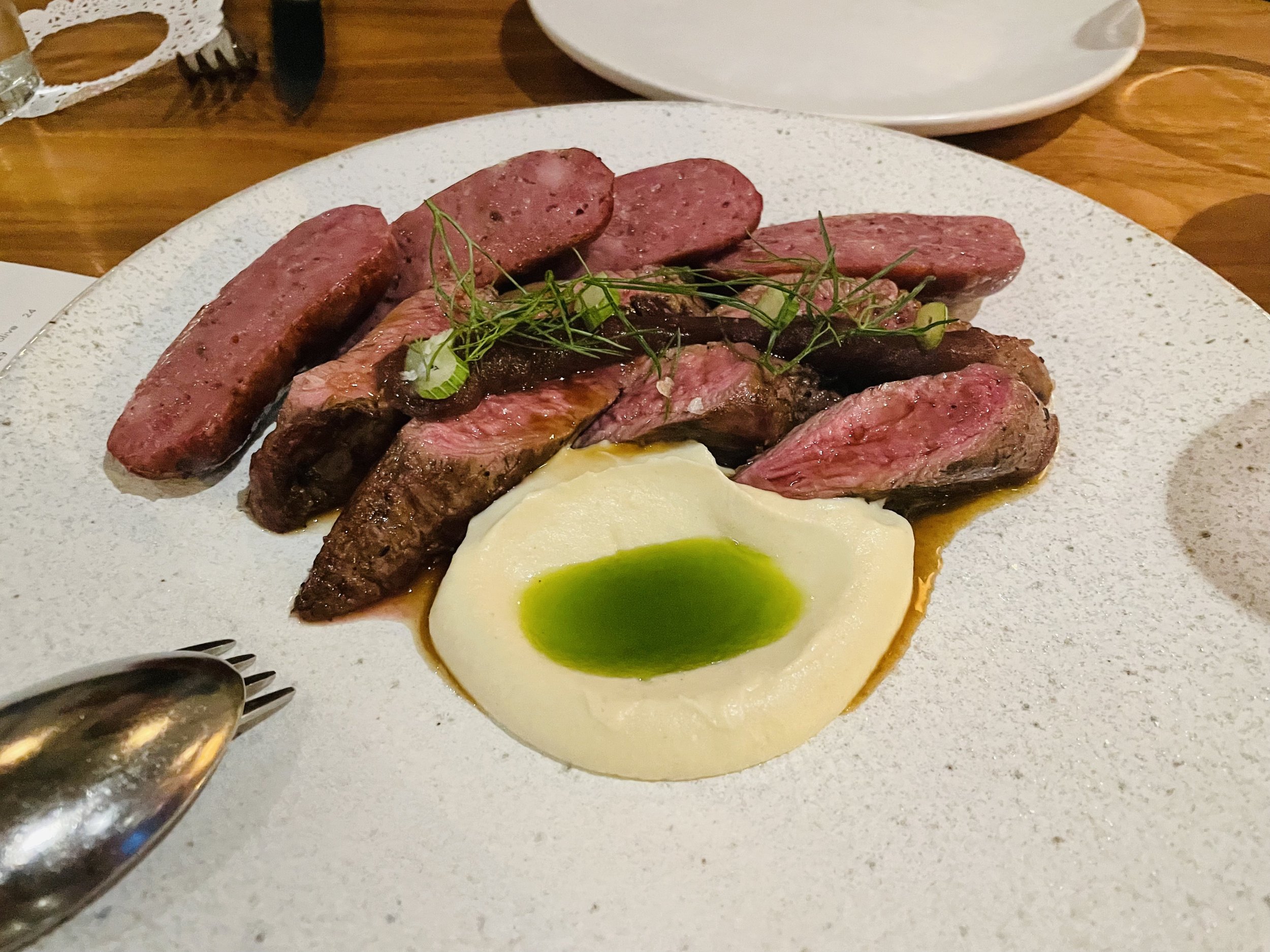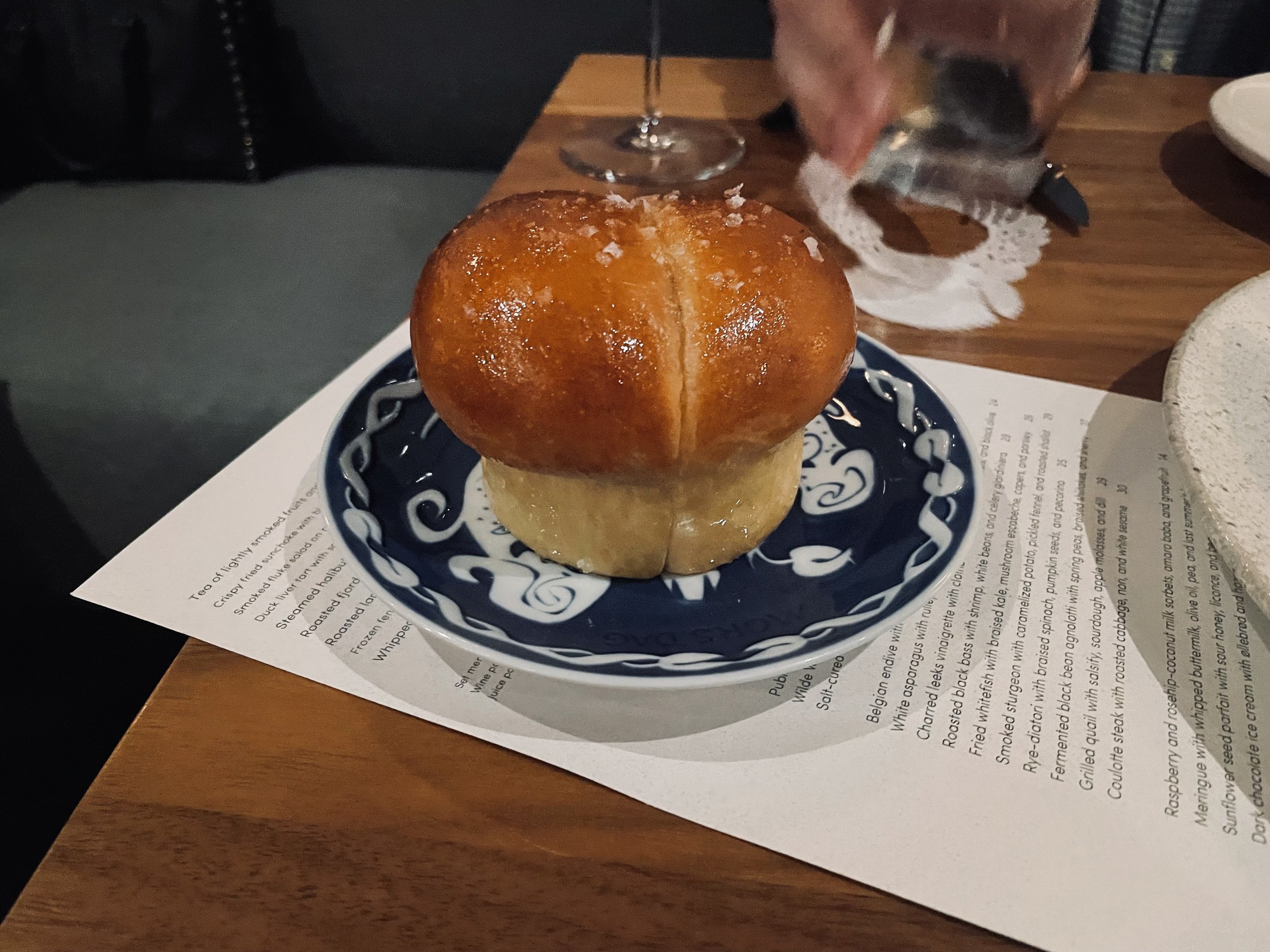Elske Review
Author and Photographer: Alex Wang
New Nordic cuisine, pioneered at restaurants including Noma, Frantzen, and Faviken, is a school of cooking that emphasizes the use of region-specific ingredients, minimalist preparations that do not transform the ingredients so much as highlight their best qualities, and the use of traditional Nordic preservation techniques such as drying, smoking and fermentation to generate umami and depth of flavor. This style of cooking has been one of the most influential in the past several years, influencing many chefs not only in Europe but in the rest of the world to apply a hyperlocal approach to their own regional cuisines, from Peru to Australia. The movement is beginning to take hold in the US as well, with restaurants like Manresa in California and Eleven Madison Park in New York City.
However, the New Nordic movement had yet to put down roots in Chicago until the opening of Elske in the Fulton Market District. Elske is a Scandinavian-inspired American restaurant run by a husband-wife pairing, with David Posey handling the savory dishes and Anna Posey taking charge of the deserts. David and Anna both worked at and helmed a number of influential restaurants in Chicago including Blackbird and the Publican, before deciding to open their own restaurant in 2016. Elske took off to roaring start, being named the Best New Restaurant in America by Eater and the second best in the same category by Bon Appetit in 2017, as well as receiving a Michelin star which it has retained ever since.
I had wanted to try Elske for a long time, and I finally got the chance to visit the restaurant with a friend in late April. Upon arriving at Elske, the first thing I noticed was the large garden seating area, with a series of tables on the gravel surrounding a large wood-burning fireplace. During the warmer months this would be a lovely place to dine. I would have very much liked to spend some time here sitting by the fire, taking in the heady smells of the herbs and flowers and the rich oak smoke, but it was a bit too cold so we headed indoors. Inside, the restaurant was small, simple and homey, reminiscent of a midcentury Scandinavian home. A double height ceiling, coupled with large windows and a clean stone floor, imparted a sense of lightness to the space, while the cream colored walls, exposed wood beams, raw brick, and simple wood furniture counterbalanced that with a touch of coziness. In contrast to the small dining room, the open kitchen was quite large and took up almost half of the total interior space of the restaurant. The kitchen was centered around a large wood-burning hearth, which the chefs used to impart a liberal amount of smokey flavor to many of the dishes we tried. There was also a modest bar with a small, curated selection of high end bottles, but it was empty and I suspect this isn’t really the kind of restaurant you go to for only a drink.
The dining room was predominantly occupied by tables for two and four, but I observed a few larger groups seated at large tables sharing some of the larger plates from the à la carte menu. We were promptly seated, and the waiter provided us with menus, but we already knew that we wanted to try the set menu with the juice pairing. We notified the waiter, and the show began.
The first course was a tea of lightly smoked fruits and vegetables. The tea was dark and concentrated, and franky resembled a rich vegetable stock more than a tea. It was fairly difficult to determine which fruits and vegetables were used by taste alone, and the waiter did not mention the ingredients either, so I am left to speculate that it probably contained at least some onions, carrots, and apple, though no one flavor in particular stood out. One of the reasons why it was so difficult to discern any flavors was because the tea was somewhat heavyhanded with the smoking of the fruits and vegetables, tasting unrefined and slightly tar-y instead of the gentle kiss of smoke that I was expecting. There was a lot of pectin in the tea from the fruits and vegetables used, and along with the generous amount of oil slicking the surface of the tea it provided a smooth, caramel-like tongue-coating mouthfeel. 6/10.
tea of lightly smoked fruits and vegetables
crispy fried sunchoke with black truffle
Once we had finished the tea, the waiter brought out the next three courses together, as a set of amuse-bouches.
The first of these was a crispy fried sunchoke with black truffle. It resembled a miniature taco, with the shell being a thin translucent slice of deep fried sunchoke. The texture of the sunchoke was hard and glassy, but it melted in the mouth and became hard like toffee rather than crunchy as the name of the dish would suggest. Inside the “taco” was a slice of truffle and some leek cream, along with some thinly minced chives. The filling was delicious, with the rich fragrance of the truffle and the leek punching through the airy, lactic flavor of the cream. 8/10
The second of these was a smoked fluke salad on rugbrød. The two thin pieces of rugbrød sandwiching the fluke were made of rye and took a backstage to the filling, providing a hard textural contrast while not interfering with the strong flavors of the salad inside. The fluke itself was slightly sweet, smoky, fatty, and full of umami, and its flavor melded harmoniously with the dill and onion used to season the salad, while a bit of lemon brought much-welcomed acidity. The fluke salad tasted eerily similar to a lemon and dill tuna salad I had gotten from Target the week before. That is not to say that the flavor wasn’t delicious (to be fair, the tuna salad was probably the best thing I’ve ever purchased from Target), but the flavors were relatively mundane compared to the other dishes. Nevertheless, it was a well-executed and thoroughly enjoyable course, and I could have easily eaten five more of these little canapés if they were served to me at a party. 7.5/10
smoked fluke salad on rugbrød
duck liver tart with buckwheat and pickled ramps
The third of the trio of courses was a duck liver tart with buckwheat and pickled ramps. It was served as a small slice of tart with duck liver pate as the filling. The duck liver was rich and dark and gamey, perhaps a bit stronger tasting and less fatty than foie gras, but working well in this context as an aerated mousse-like filling. The shell was a buckwheat crust that was crumbly and graham-cracker like, serving as a foil for the soft texture of the duck liver. The tart was dusted with a layer of dried, pulverized green ramps that did not taste pickled and did not add a significant amount of flavor to the dish except perhaps a bit of pleasant sweetness. Somewhat peculiarly, the dish reminded me of a Reese’s peanut butter cup in texture. 7/10
Along with the trio of courses, we were served a juice pairing of white grape, yeast, and star anise. It tasted like grape candy, or what I imagine a grape cream soda would taste like. The juice was carbonated, creamy, and sweet on the palate, but perhaps could have used a bit more acidity and a bit less star anise. The finish reminded me of the flavor of a popsicle stick; faintly balsa-woodsy in a pleasant way. 6.5/10
The next course was a dish of steamed halibut with turnip, pomelo, and pecans. Visually, it was the most impactful dish of the night, with the thin slices of white turnips creating a monotone blanket over the halibut, which contrasted with the rustic grey ceramic backdrop of the plate. The turnips also provided an interesting vegetal funkiness that was quite a novel counterpoint to the fish. The white cream sauce coating the fish was funky in a different sort of way, and probably contained some sort of sharp cheese akin to either Raclette or Parmesan. It was a touch too salty, however, and I would have appreciated less of it on the plate since it dominated the more delicate flavor of the halibut. The dish was sprinkled with some pomelo arils, meant to provide some freshness and acidity, but I could have used more of them as pomelos are sweeter and not as sharp as lemons or limes. I would have also appreciated a bit of pomelo peel spritzed over the dish, as the vessicles of the pomelo themselves do not contain the fragrant essential oil of the fruit. The final component of the dish was some pieces of pecan, and as I was eating them I realized that this dish is probably supposed to be Elske’s take on a sole amandine, with the pomelo, pecans, and cream sauce riffing on the lemon, almonds, and meunière sauce of the original. 7/10
steamed halibut with turnip, pomelo, and pecans
The juice pairing accompanying the halibut was apple, whey, juniper, and spruce. It contained a bit of olive oil that seperated out and floated to the top and was very fragrant as I put the large bowl of the wine glass to my mouth. The juice itself was lactic and yogurty, and the juniper and olive oil proved to be a great combination of flavors. The apple took a bit of a backseat in intensity, and I didn’t taste any spruce, but overall the juice was complex, refreshing, and not too sweet. 7.5/10
The second fish course was grilled fjord trout with spiced carrot, sunflower seeds, and fried garlic. The fjord trout was very delicately cooked and almost but not-quite raw inside, as is the common way trout and salmon are served at most high end restaurants nowadays. The carrot was served in three ways: pieces of smoked, roasted carrot were served alongside the fish, and were topped with jullienes of quick-pickled carrot. The sauce accompanying the dish was a mole made of spiced carrots, and it was fragrant, sweet, and spicy. I asked the waiter to leave the saucer he had served it from at our table so I could enjoy more of it as I ate the dish. Finally, a topping of sunflower seeds, trout roe, and crispy garlic provided a bit of crunch and pop that contrasted well with the tenderness of the fish. 8.5/10
grilled fjord trout with spiced carrot, sunflower seeds, and fried garlic
The juice served with the trout was earl grey, clove, apricot, and orange. It was good, but similar to the first juice, it used a bit too much clove. It too was a bit too sweet for my tastes, and could have used more acidity. 7/10
The main course of the night was a duo of lamb: roasted lamb saddle and sausage with cauliflower, fennel, and smoked dates. The roasted lamb saddle was perfectly cooked: tender and juicy inside with a crusty, slightly charred exterior. Meanwhile, the sausage was apparently based on kielbasa but reminded me more of Italian sausage given its use of fennel seed. The sausage was deliciously lamb-y, with a slight kick of heat from chiles. Alongside the main plate we were served Parker house rolls topped with sea salt that were buttery, soft, and utterly perfect. The other accompaniments were slightly less well executed; both the date sauce topping the lamb saddle and the cauliflower purée served on the side were too sweet, and somewhat overpowered the flavor of the meat. Perhaps if the cauliflower purée was less sweet, or if the date sauce was drizzled on the sausage instead of the lamb saddle, then their sweetness would have been less unwelcome and more appreciated. Overall, however, this was a really good dish. 7.5/10
roasted lamb saddle and sausage with cauliflower, fennel, and smoked dates
To enjoy alongside the lamb, we were served a juice of beet, pomegranite, lapsang souchong, and shiitake mushroom, that was meant to simulate a full-bodied red wine. The grassy, vegetal flavor of the beet was interesting to the palate yet not overwhelming, while the pomegranite provided nice tannins and roundness, though not as long lasting as the finish in a real red wine. Nevertheless, this was perhaps the most convincing non-alcoholic red wine alternative I have tasted thus far. Shiitake mushroom is an ingredient that is being explored by a number of restaurants and companies as a way to add umami and body to non-alcoholic wine proxies; for better or for worse, it flew under the radar in this juice, with its presence manifesting as perhaps a bit of extra body. Likewise for the lapsang souchong, which my palate detected as the faintest trace of smokiness and not much more. But that was fine with me, because it needed merely to serve a counterbalance to the more prominent flavors of the beetroot and pomegranite. This was my favorite juice pairing of the night. 8.5/10
beet, pomegranite, lapsang souchong, and shiitake mushroom
frozen fennel jelly with mint
The pre-desert palate clenser was a small cube of frozen fennel jelly with mint. I did not care very much for this dish. Its coldness made chewing the jelly unpleasant and negated the more interesting textural aspect that the jelly could have brought to the dish if it was not frozen. The dried mint powder itself tasted a bit stale, like a package of store-bought mint that had sat in the fridge for a few too many days. Some fresh mint on top of the fennel jelly would have been better. 5.5/10
To accompany the desert, we were served a juice of rose petals, tomato, and sea buckthorn. This was an extremely interesting combination of flavors that had the peculiar effect of tasting exactly like bread. It wasn’t bad, but was certainly an odd drink that was better to sip than to drink a lot of. 7/10
The last course of the night was a whipped gjetøst cheesecake with poached rhubarb. Anna Posey is a highly lauded pastry chef known for her creativity, simplicity, and use of unusual Scandinavian ingredients, and I had been dying to finally try one of her desserts. The first thing I noticed was the caramelized nuttiness and slight umami funk from the whipped gjetøst cheesecake filling. Gjetøst, also known as brunost, is a kind of Norwegian brown cow and goat “cheese” that unlike true cheese is made with whey and cream reduced down untill it becomes firm, fatty, and caramelized. It is usually eaten on sandwiches or biscuits, but it is sweet enough to be placed on top of waffles, which is a popular dessert in Norway. Similar to that usage, in this dish additional gjetøst was shaved on top of the cheesecake, allowing its rich fragrance and flavor to be appreciated unadulterated. A crumble at the base of the cheesecake provided an extremely satisfying crunch, while a poached rubharb and elderflower coulis drizzled on top of the cheesecake lent a bit of tartness and just the faintest hint of elderflower. It was just a hair too sweet for my taste and could have used a bit more acidity, but otherwise this was a perfect desert, almost evoking a cross between a cheesecake and a peanut butter sandwich for grown ups. The quality of this dessert makes me want to return to sample the other desserts on the à la carte menu, such as the sunflower seed parfait with sour honey, licorice, and bee pollen. 9.5/10
whipped gjetøst cheesecake with poached rhubarb
Before heading out, I gave into my curiosity and ordered a small glass of the restaurant’s homemade hoja santa schnapps. This was a huge mistake. It tasted like gasoline, with the hoja santa imparting a painfully strong herbaceous bite similar to that of catnip. Nevertheless, I will defer judgement on this drink because there is probably someone out there who likes it, but you would be hard pressed to find them.
If I were to use three words to describe Elske, they would be: cozy, comfortable, and satisfying. I left Elske feeling pleasantly full, neither stuffed nor still hungry. Similarly, the service we experienced was attentive and warm, but unobtrusive. Elske does not seek to blow you out of the water. The goal of the restaurant is to create an enjoyable experience that ticks all the boxes for what you are looking, while being far from boring. The food is interesting but not overly challenging, full of intriguing flavors without straying too far outside of the chefs’ wheelhouse. Although the tasting menu at Elske does not change seasonally, the menu gradually evolves as certain dishes are rotated out and replaced with new ones. In spite of this, Elske is a restaurant that I would find extremely rewarding to return to; the à la carte dishes meant to be served family style are equally as compelling as the dishes on the set menu. I would highly recommend this restaurant to anyone looking for a nice date night dinner that won’t break the bank and will leave you with enough time left in the night to enjoy a show or a couple of bars afterwards.
Conclusion: Eslke provides an experience that is informal yet full of care and craft, and a simple style of cooking that highlights the natural complexity of the ingredients used. 4.5/5


